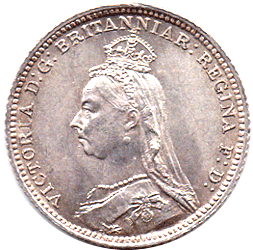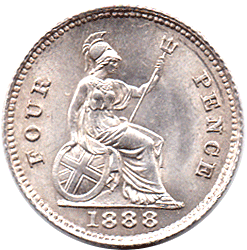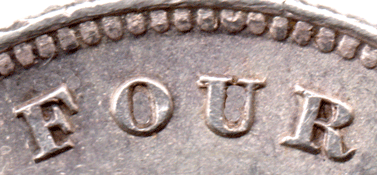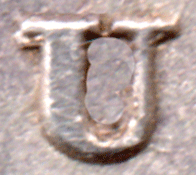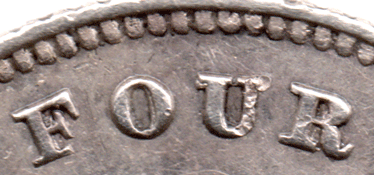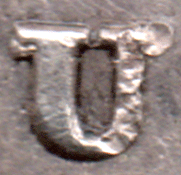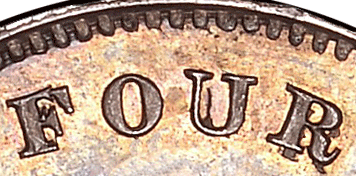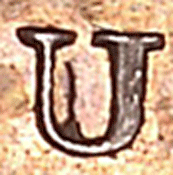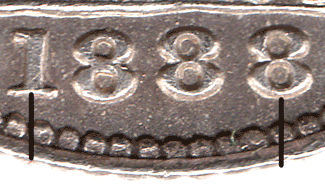|
Michael Coins Ltd |
![]() Other Lists
Other Lists
COIN CLUB
1888 Groats
|
|
|
|
|
GR 1888 A - Obv. |
GR 1888 A - Rev. |
Obverse
Victoria 'Jubilee' type head. VICTORIA D: G: BRITANNIAR: REGINA F: D:
|
|
|
|
|
GR 1888 A - Rev. F |
|
GR 1888 A - U of FOUR |
|
|
|
|
|
GR 1888 B - Rev. G |
|
GR 1888 B - U of FOUR |
|
|
|
|
|
GR 1862 P - Rev. E |
|
GR 1862 P - U of FOUR |
Reverses
Rev. F - Similar to the 1862 proof dies.
FOUR - The F is over F but the top bar is in good alignment.
The U is also slightly double struck but the large, thicker leg has now
returned to the left side.
The R has a trace of having been double struck but unlike on the
1862 coin the double striking is contained within the letter R and
does not protrude beneath.
PENCE - Similar to the 1862 proof dies.
Rev. G - Similar to the 1862 proof dies. See the image
FOUR - The F is over F but the top bar is in good alignment.
The U has a thick right leg similar to that of the 1862 proof die
as well as the normal thick left leg !?
ONE of the big differences with the U for 1862 is gap in between
the upright legs of the U is wide apart whereas on the 1888 with
Rev. F the gap is small between the two legs. In fact the gap looks
smaller than the normal U !
The other major difference is that the thick right leg of the U
appears to have several knocks - but why would anyone want
to just beat down a thin right leg and make it fatter !!??
It makes no sense ! Also there are no external knocks in the
field around the knocked right leg. One would have to be
extremely accurate to but beat the thin leg to a fat leg and
leave no external marks.
Could this happen by beating down that thin leg !?
I do understand that there is one large 'indent' at the extreme
top right edge of the U - but I not not believe it has anything
to do with what has happened to the right leg !
Strange why are the knocks ONLY on the right leg !?
Could these knocks have happened on a U die punch ?
as the marks appear only on the right leg ! - Very strange !
The U has been double struck as a small 'bit' shows just
below the serif edge at the top left leg of the U !
Has this any baring on the what happened but as one can see
that same double strike appears on Reverse F !
PENCE - Similar to the 1862 proof dies.
More questions than answers. I would be very pleased to hear from
anyone that has another example of this 'thick' right leg of the U of FOUR.
Rev. E - The reverse of the 1862 Groat (Proof) shows that the U of FOUR
is unique in that it appears to be in reverse !
See the images and compare with the norm. Reverses A to D & F.
The solid left leg is now a solid right leg !
The thin right leg is now a thin left leg.
Was a broken punch used ? As the ¾ height of the right thin edge
of the solid left leg remains - but not the infill !
|
|
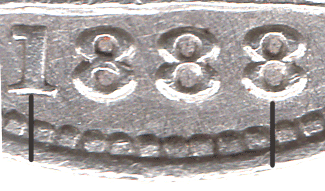 |
|
|
GR 1888 A - date (wide date) |
GR 1888 Aa (Narrower date) |
Date:
Groat 1888 A - Date: Width is 10 & ½ teeth (Wide)
Groat 1888 Aa - Date: Width is 9 & 2 x ½ teeth (Slightly narrower)
| Back to Groats |
